I know absolutely nothing about the McCanns who once lived in the small red-brick cottage on the grounds of the Botanic Gardens in Glasnevin in Dublin, but I can't help resenting them.
The near derelict old house in Glasnevin which has come perilously close to collapse carries their name now – McCann’s Cottage it’s called, at least by locals and the gardeners who tend to the flowers that grow all around it. But it should have a different name, it should have my name.
The house – currently being saved from ruin by the Office of Public Works was built for a Pope – William – in the middle of the 19th century. Popes were born there, they were reared there. And they were carried out through its wooden green door in coffins – sometimes adult-sized ones but far more frequently in smaller boxes.
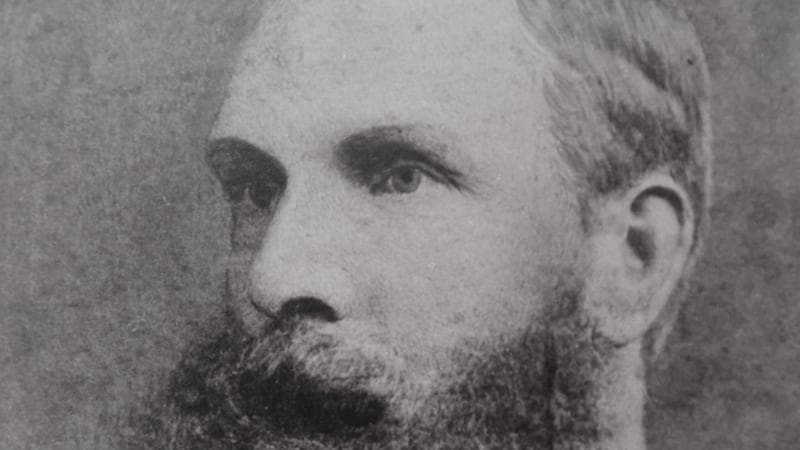
William Pope is buried a few feet from the gardens where he lived and worked and from the house built for him. He lies over the wall in Glasnevin Cemetery.
He bought a plot there in the early 1860s for his daughter, Margaret. She was just three when she died shortly before Christmas 1861. Her brother Patrick followed her into that grave three days later. He was one.
Five years on William's son John died at the same age as his daughter Elizabeth Pope died four years later – at just a week old. The Popes buried in the plot by the Botanic Gardens from the 1860s on were taken by typhoid and bronchitis and "congestion of the lungs" and a "weak action of the heart".
William passed away there in 1915, at the age of 81, having buried most of his children out of that house. I mean no disrespect to the McCanns, whoever they are, but they got lucky and if the cottage being restored today was to be called after anyone it should have been called after the Popes of the Botanic Gardens.
My grandfather Arthur was one of the fortunate Popes. He lived and so did his father Paddy.
Arthur was born in the house as the 20th century dawned and it was his home until he married in the 1920s. It might have remained his home until he died in 1966 but for a questionable decision made for him by his dad.

Arthur’s first child, my aunt Betty, briefly lived in the cottage – which looks like a tiny bungalow from the front but extends to three floors of very modestly proportioned rooms at the back – as a toddler.
She stayed there as she she waited for her mother Greta to come home from hospital with my father. And it was to that small cottage that my father – christened William after his great grandfather but called Billy – was brought as a newborn in the autumn of 1932.
"We believe, from our books that there were three Popes employed here over 93 years, although I know that Pope family tradition has it, there is a fourth generation," the director of the Botanic Gardens, Matthew Jebb, tells me as he takes me on a walk through the gardens in the full bloom of summer.
“But it’s probably true . . . So it must have stretched well over a century.”
"I don't think there's very many people in the country have such a direct line of descendancy to something so special," explains Tricia Kearns, my first cousin, and the unofficial Pope family historian.
It all started with Patrick Pope.
He left his Waterford home as a young man in the early part of the 19th century and found temporary work as a labourer in the Botanic Gardens. He left for a spell before getting apermanent job there.
“He lived locally and his son, William, obviously, would have been in and out of the gardens with his father and probably learning by his side. And he then became a gardener himself,” Kearns says.
William climbed the ranks, becoming a foreman and getting a house.
"And his son, Patrick Joseph (also known as Paddy) grew up in that house and would have been learning at his father's side and took over as a foreman gardener in the glass houses when his father retired. His son was Arthur, our grandfather and he grew up here."
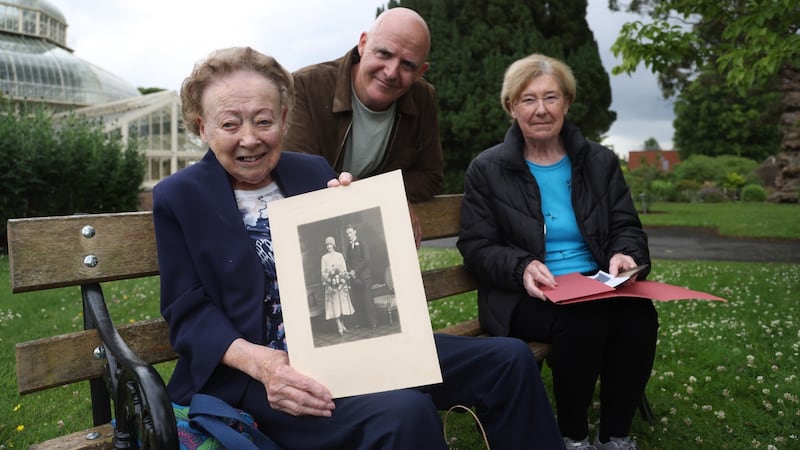
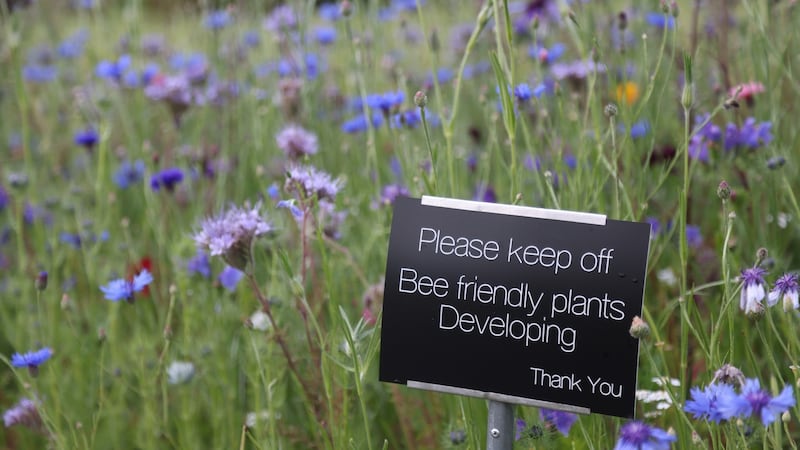
Paddy Pope retired in 1934, three years after Betty – Tricia's mother – was born. She is the oldest surviving branch of the Pope family tree with a direct link to the Botanic Gardens. She turns 90 this month and recalls time spent in the gardens as a child.
“My father having been reared here loved coming up on a Sunday. He’d walk around the garden and talk about the trees and the birds.”
More than a decade separates Betty and her youngest sister Ann but the younger sister’s earliest memories are also of the gardens.
“My first memories were me walking with my father here on a Sunday morning after mass. He’d bring me for a walk and he’d tell me things he did as a child, he used to get into trouble swimming in the Tolka and then sometimes they’d go into the glass houses and eat things they shouldn’t have been eating, rare, precious things.”
So on the one hand, you have Popes caring for and cultivating new flowers and making the gardens majestic and then on the other hand, you have Popes eating them.
Morto for me grandda.
“Arthur’s father Paddy loved the chrysanthemums and would get up out of his bed in the night if he thought there was frost coming to protect his plants,” Betty tells me.
There was one plant Paddy might have protected more than most, the one that carried his name.
His father William had been given the job of cultivating an insect-eating sarracenia from seed and, against all the odds, and without so much as a page of a book to refer to, had grown it to full bloom. So delighted was the Botanic Gardens' then director David Moore that he brought his foreman to Kew Gardens in London and gave the new plant the Pope name – he called it Sarracenia Popei.
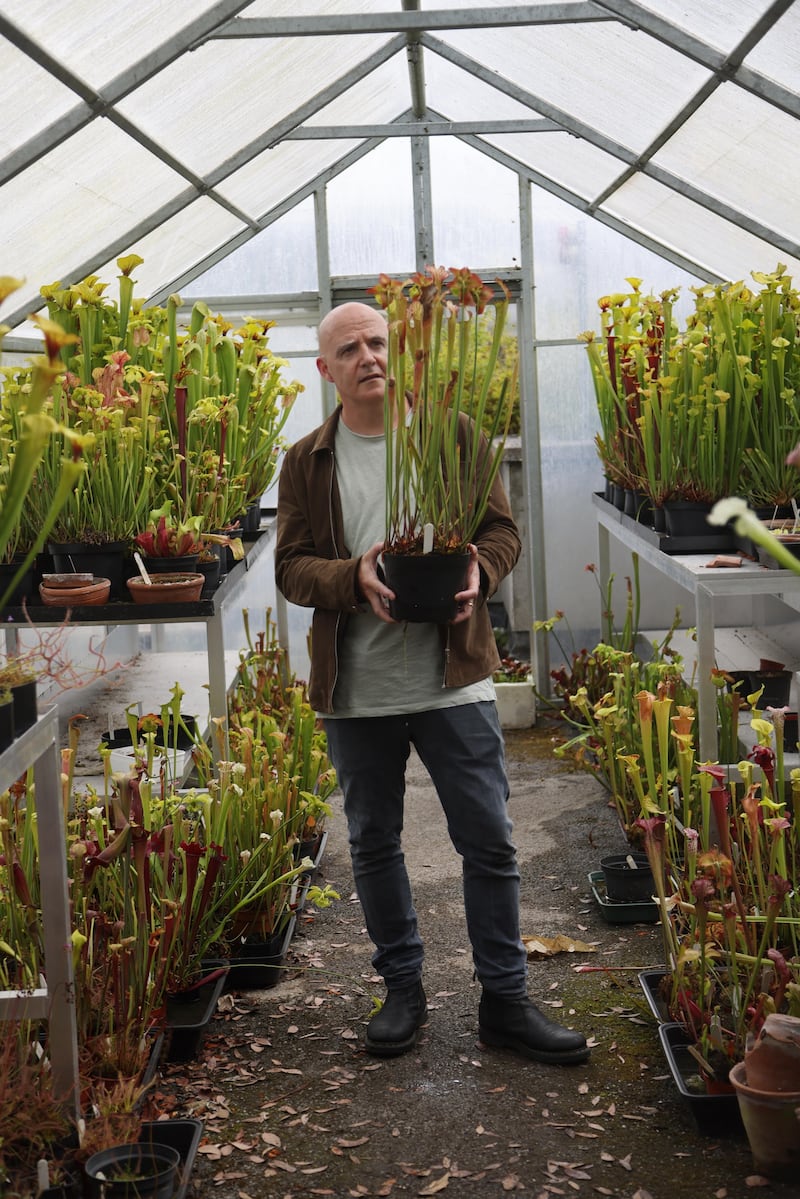
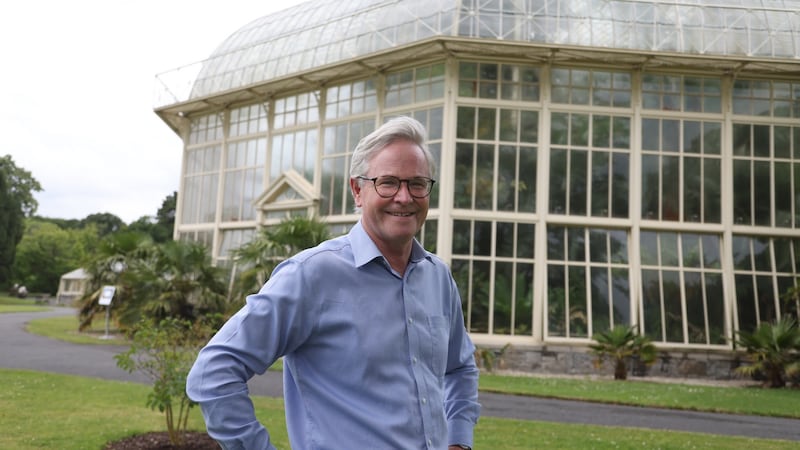
“Apparently it was very unusual for an ordinary person, a foreman, to have a plant named after him,” Betty says.
Today's director Matthew Jebb agrees and as he takes me to meet my "ancestral plant", a hybrid between two wild species from North America. He explains the honour that would "normally be restricted to people like David and Frederick Moore, who were running the organisation, the 'lowly' gardeners, so to speak, were often in the background. They perhaps weren't seen or recognised but it was very obvious David Moore recognised William Pope's skill at not only growing these plants, but breeding them as well. It was something that you were creating that no one else had. So this one being named after William Pope would have been a tremendous honour".
Jebb says the Popes would also have cultivated “a lot of plants, and assisted with material that would have been sent to Charles Darwin” although Moore “would have been an ardent creationist and would have regarded this idea of the origin of species being based upon natural selection as something to be very, very wary of”.
The plant world suggested Moore was wrong about the living world’s roots, Jebb says.
“Evolution works by the number of rejects, it is only picking out the best and most thrilling things to survive. This is brutal, brutal evolution and to be successful, you’ve got to be easy to grow. You’ve got to be spectacular in appearance. And you’ve got to be fixed, you can’t start varying through time – your offspring have to be more or less identical to yourself.”
The heavy wrought iron gates of the National Botanical Gardens first swung open in 1795 after the Royal Dublin Society decided the Empire's second city needed a show garden to call its own.
While today its seen as a pleasant place to while away an afternoon surrounded by flowers and plant, its function in the early days was more utilitarian than aesthetic.
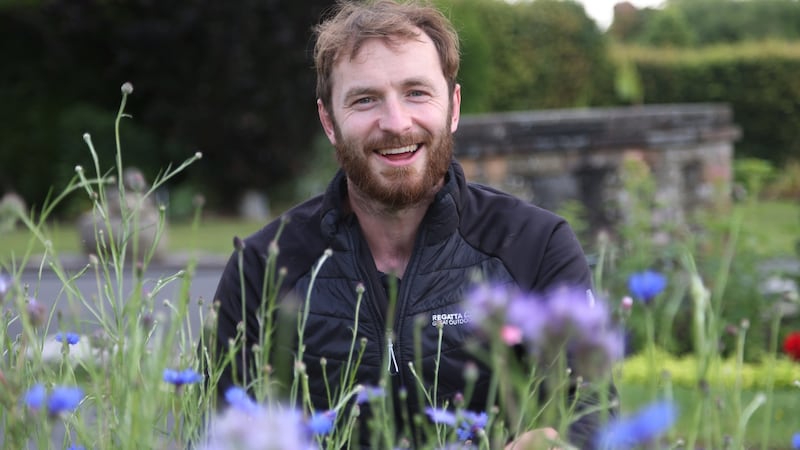
It was there to support industry and agriculture and give landowners and their labourers a practical education. A hay garden, a cattle garden and a vegetable patch were among the attractions. But then, in the 1830s when – coincidentally, it should be said – the Popes arrived, more exotic plants started to make their presence felt.
It wasn't the arrival of Moore or the Popes but the expansion of the British empire that caused the shift. Adventurers endured unimaginable hardships across Africa, Asia, South America and Australia to find new plants to ship back to Kew Gardens in London and its sister site in Dublin.
But the dual functions did not end. Research was crucial to the Botanic Gardens, never more so than in the 1840s when Moore and his gardeners took centre stage and could have saved many hundreds of thousands of Irish people – if not millions – from horrendous deaths.
The Gardens’ visionary director detected potato blight at Glasnevin on August 20th, 1845 and almost immediately recognised it as a sign of calamity.
Moore was already endlessly fascinated with orchids and insectivorous plants and, according to Jebb, was studying how a tiny orchid seed was "dependent upon a fungus actually attacking it. As soon as the first potato blight was found in Ireland, less than a week after it had been detected in the Isle of Wight, the first place to be hit, he started investigating. He quickly deduced it was a fungus", Jebb says.
But others were not so in tune with the ways of plants.
“The powers-that-be in the Royal Dublin Society said to him, ‘it’s electrical, it’s got to be electrical, it’s to do with electrical storms that are prevalent at the moment’.”

So rather than allowing him to treat fungus-caused blight in the first days of the famine “they had him set up all these elaborate copper wires over the potato crops he was growing here”, Jebb says. “He said, ‘No, no, this will be a fungus that’s causing this’.”
Moore knew a combination of copper sulphate and lime was used to treat similar diseases in Bordeaux’s vineyards.
“There’s a certain tragedy in it,” Jebb says while acknowledging that a faster acceptance of Moore’s theories “would not have solved the incredible crisis that unfolded at the time”, it would have at least been a faster step on the road out of the crisis.
“To have actually organised the spraying of the crops on that sort of scale in that particular year [would have been a huge task] because it wasn’t as though it crept up on and over several years, it was sudden, and irrevocable, and it happened in just a couple of weeks.”
The Popes' role in the fight against famine is part of family folklore, and a print of the Sarracenia Popei hangs in virtually all the family houses, but the family’s link to the Botanic Gardens eventually ran out of steam even though, as Betty explains, her father would have been keen to follow his father into the Gardens.
"Paddy Pope wanted all the sons to go into different forms of electricity. One was in the ESB, another worked on the railways and Arthur worked in the Customs house," she says.
Did Arthur Pope ever feel like he missed out on something by becoming an electrician? Ann reckons he did.
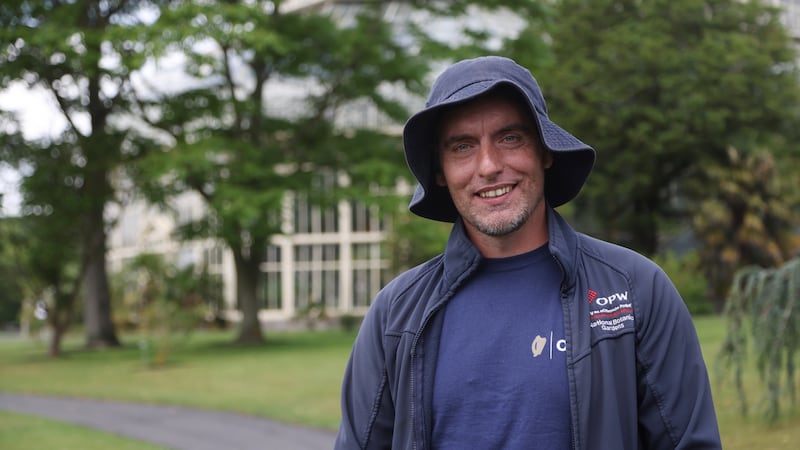
“He had this creative side that he didn’t let loose until his older years when he really began to push himself, you know, in the way of gardening.”
While for many people the Gardens is a lovely place to go for a stroll, Jebb stresses that it still has a much more important function which he explains by way of a question.
“Who is going to feed our great grandchildren? Will it be clever lawyers or accountants? No, it will be plant scientists. It will be agronomists, people who know about the growing of plants, diversifying new crops, knowing how to get the best yield from land. This is the most fundamental question that faces humanity at any time. You think that money makes the world go round, but actually, it’s the fullness of our harvests. It’s the harvest that is absolutely fundamental to humanity’s life on this globe.
“If we can make sure that five or six children a year come through those gates, and become inspired to become plant scientists of any sort, whether that’s in horticulture or the naming of plants, all of that will make a huge difference to not just Irish society, but to the sustainability and longevity of the globe.”
All of the gardeners and staff I speak to as we weave our way through the Gardens share Jebb’s love of the place and his passion for knowledge, although many have taken a circuitous route to get here.
One I spoke to was a sound technician and musician before finding his true calling. Another started a course in software engineering before realising he hated it and retrained as a horticulturist.
Cathal O’Suillivan was tending to some vividly-coloured beds under his care and looked understandably flustered when I suddenly appeared by his side asking him questions about his career and the path that led him to the Gardens. A day later he decided he had not done himself justice in his answers and in an email he described them – wrongly, as it happens – as “lame”.
In a sign of the consideration people like him give to their jobs and their lives, he answered the question a second time.
“I do try to remain conscious of all who visit here, no matter the age or knowledge. I try to heighten the frequency for them a bit. I also try to bear in mind all the life connections that find their way to this place be it to refuel or renew. The bees, the butterflies, the ladybirds and the many other creatures who we are surrounded with here.
“Perhaps the main reason I got into gardening was for my soul,” he continues. He said his mother is living with dementia and he has “noticed many like her who have visited over the Covid period”. He says he has been struck by the “caring tenderness expressed by their sons or daughters as they review the 86 metres-long double borders” he has planted and says it is “pleasing to hear their now challenged minds recognise a plant, if not the name”.
O’Sullivan says the gardeners receive “lots of compliments, which is lovely” and there are also “hurlers on the ditch, those who love to tell you their dislikes and what’s wrong. I enjoy the banter though and of course we all have different tastes. I do my best”.
He says that one of the nicest pieces of feedback he has ever received “will stay with me. A grandmother and her little three-year-old grandson walking hand and hand through the borders one particularly quiet morning. The day was good, the sun was out and there was a riot of colour. She shared with me that she had taught all her four kids their colours on visits to the herbaceous borders when they were also little. I thought what a beautiful memory for all of them”.
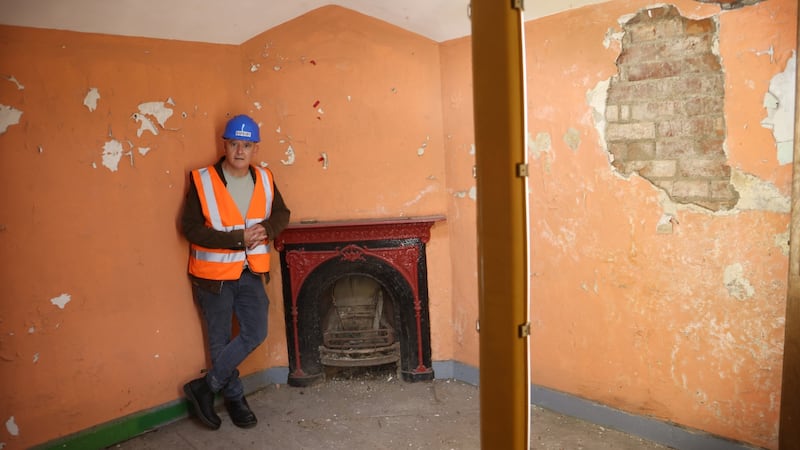
O’Sullivan says he ran away from boarding school as a teenager, and worked in retail and hospitality for year in Ireland and New York “before finally going back to college to study horticulture”.
Since then he says he’s been fortunate to have worked with some great gardeners in Ireland and the UK and now the “jewel that is the National Botanic Gardens”.
My mini and distinctly DIY Who Do You Think You Are ends in the house known as McCann’s Cottage where so many Popes were born and too many died.
I think of Jebb's words about the "brutal" nature of evolution and the small contribution my ancestors made to horticulture and to the work of Charles Darwin and how maybe sometimes it's the luckiest who survive and not the fittest.
Had Paddy Pope succumbed to any one of the diseases that took so many of his siblings then this branch of the Pope family tree would have withered a long time ago. I look at the original plaster, crumbling now but still covered in paint applied by Popes and the cast iron firepalaces where Popes huddled to keep chills away. I stare at thick roots embedded into powdery mortar and look up at the blue sky where roof tiles once were and will be again.
Everything is being carefully restored and replaced now to allow this house someday reopen as an administrative office but even when it’s shiny and new, the echoes of the Popes will linger, no matter what the cottage is called by the generations of the future.












